How to Fertilize Fruit Trees
- February 12, 2025
- 0 comment
Fertilizing fruit trees properly is one of the most important steps in ensuring their health, productivity, and longevity. When trees are nourished with the right nutrients, they can produce an abundance of fruit, resist disease, and tolerate environmental stress.
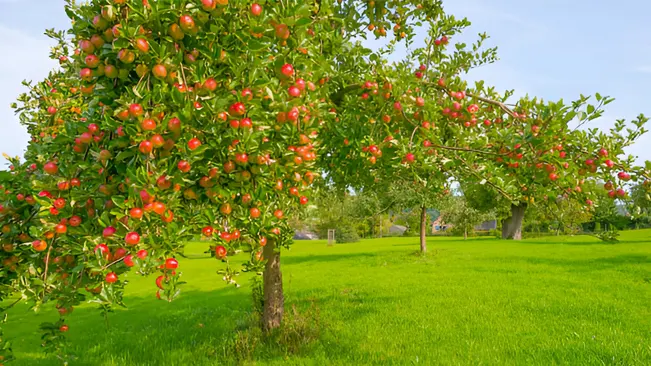
This comprehensive guide provides a step-by-step approach to understanding how, when, and what to feed your fruit trees to help them thrive and deliver bountiful harvests year after year.
List of Table Content
- Understanding the Nutritional Needs of Fruit Trees
- When to Fertilize Fruit Trees
- How to Determine If Your Fruit Tree Needs Fertilizer
- Types of Fertilizers for Fruit Trees
- How to Apply Fertilizer to Fruit Trees
- Organic vs. Inorganic Fertilization: Which is Better
- Common Mistakes to Avoid When Fertilizing Fruit Trees
- The Importance of Mulching Alongside Fertilization
Understanding the Nutritional Needs of Fruit Trees
Fruit trees, like any other plant, rely on essential nutrients for growth and fruit production. The three primary nutrients required are nitrogen (N), phosphorus (P), and potassium (K), often referred to as N-P-K. Each nutrient plays a specific role in the tree’s development:
- Nitrogen (N): Crucial for leaf and stem growth. Nitrogen encourages the lush, green foliage that supports photosynthesis, a process critical for fruit production.
- Phosphorus (P): Essential for root development, flower formation, and fruit setting. A good supply of phosphorus helps the tree’s overall structure and ensures strong fruiting.
- Potassium (K): Vital for disease resistance, water regulation, and enhancing the fruit’s size, color, and flavor.
Besides these, micronutrients such as calcium, magnesium, sulfur, and trace elements like iron, zinc, and boron also play a role in fruit tree health, though in smaller amounts.
When to Fertilize Fruit Trees
Timing is key when it comes to fertilizing fruit trees. Fertilizing at the right time ensures that the nutrients are available when the tree needs them most. Typically, fruit trees benefit from fertilization during the following stages:
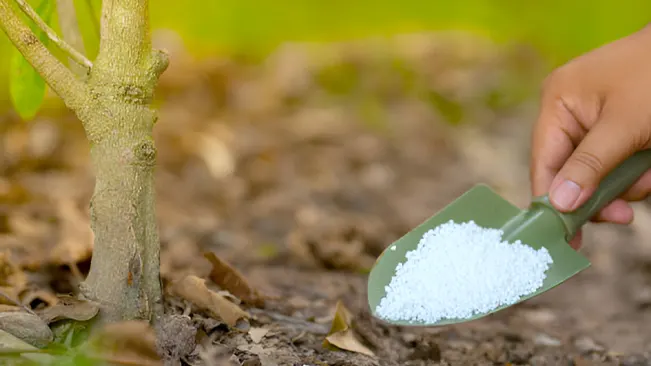
- Early Spring (Before Bud Break): This is often the best time to fertilize fruit trees. Trees are coming out of dormancy, and new growth is about to start. Providing nutrients at this stage helps fuel this early growth and prepares the tree for the fruiting season ahead.
- After Fruit Set (Late Spring to Early Summer): Once the tree has set fruit, a second, lighter fertilization can support fruit development. This helps ensure the tree has enough energy to carry the fruits to maturity.
- Avoid Late Summer and Fall Fertilization: Fertilizing late in the season encourages new growth, which can be damaged by winter cold. It is essential to let the tree begin its natural process of preparing for dormancy in late summer and fall.
How to Determine If Your Fruit Tree Needs Fertilizer
Before you fertilize, it’s important to assess whether your fruit tree actually needs additional nutrients. Over-fertilization can lead to excessive vegetative growth at the expense of fruit production and can make trees more susceptible to pests and diseases. Here’s how to check if your tree needs fertilizer:
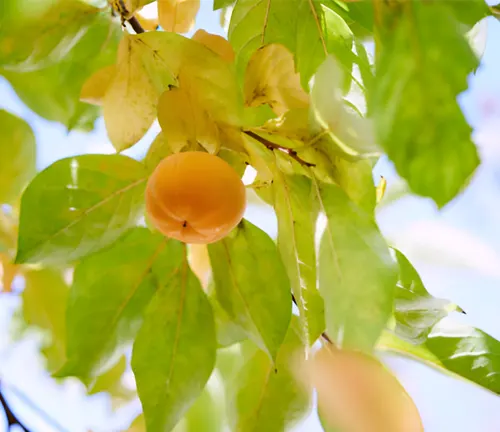
Leaf Color and Growth
Yellowing leaves or stunted growth may be signs of nutrient deficiency, particularly a lack of nitrogen.
Soil Testing
A soil test is the most accurate way to determine your soil’s nutrient content. Most local agricultural extensions offer soil testing services. The test results will guide you on which nutrients your soil lacks and how much fertilizer to apply.

Types of Fertilizers for Fruit Trees
Choosing the right fertilizer for your fruit tree is critical. Fertilizers are available in organic and synthetic forms, and each type has its advantages:
- Organic Fertilizers:
- Examples: Compost, well-rotted manure, blood meal, bone meal, fish emulsion.
- Benefits: Organic fertilizers release nutrients slowly, improve soil structure, and enhance microbial activity in the soil.
- Ideal for: Long-term soil health and for gardeners seeking a more sustainable approach.
- Synthetic Fertilizers:
- Examples: Granular or liquid N-P-K fertilizers, slow-release fertilizers.
- Benefits: Provide nutrients quickly, which can be useful for trees showing immediate signs of deficiency.
- Ideal for: Fast nutrient delivery, though overuse can lead to salt buildup in the soil.
- Balanced vs. Specialized Fertilizers:
- Balanced Fertilizers (e.g., 10-10-10): Provide equal amounts of nitrogen, phosphorus, and potassium. These are good for general fertilizing needs.
- Specialized Fertilizers: Some fruit trees, such as citrus, may benefit from specialized fertilizers with higher amounts of certain nutrients like nitrogen or specific micronutrients.
How to Apply Fertilizer to Fruit Trees
The method of application is just as important as the type of fertilizer you use. Here are the steps for fertilizing fruit trees effectively:
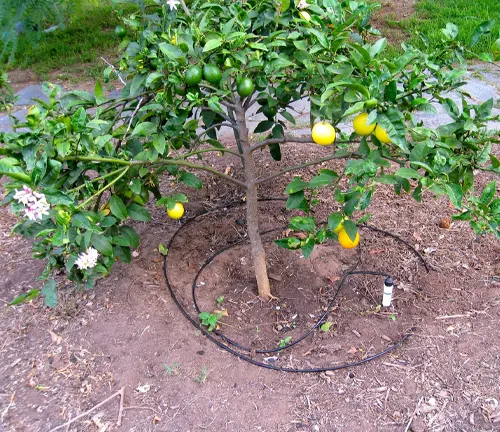
Measure the Drip Line
The drip line is the outer perimeter of the tree’s canopy, where the branches end. This is the area where the tree’s feeder roots are most active. Measure out this area for applying fertilizer.
Spread Evenly Around the Drip Line
Sprinkle or spread granular fertilizer evenly around the drip line. Be careful not to apply fertilizer too close to the trunk, as this can harm the tree.
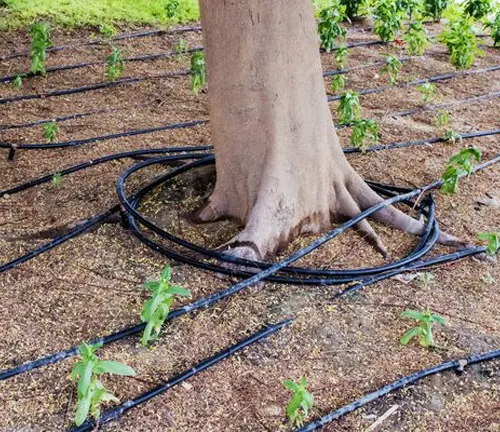
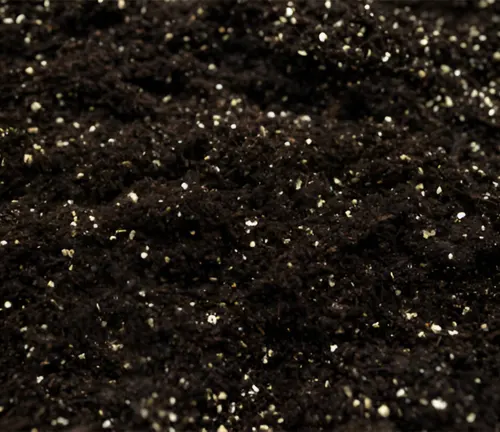
Incorporate Into the Soil
If using granular fertilizer, lightly rake the fertilizer into the top few inches of soil to help it penetrate. Water thoroughly after application to help dissolve the fertilizer and carry nutrients to the roots.
For Liquid Fertilizers
If you’re using liquid fertilizers or foliar sprays, ensure even coverage over the root zone and leaves (if using a foliar feed). These types of fertilizers are often best applied in smaller, more frequent doses.
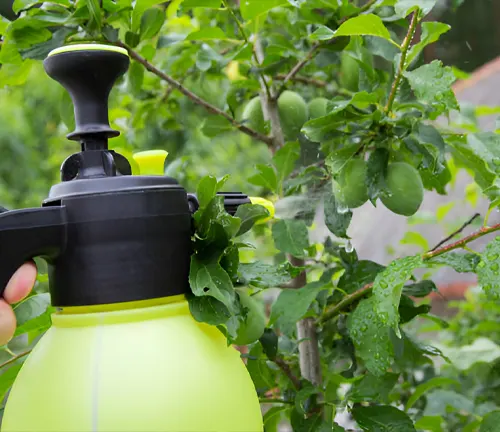
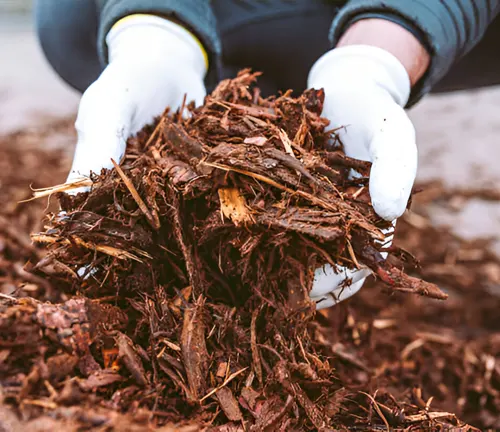
Mulching
After fertilizing, apply a layer of organic mulch (like straw, wood chips, or compost) around the base of the tree. Mulching helps retain moisture, improves soil health, and prevents nutrient leaching.
Organic vs. Inorganic Fertilization: Which is Better?
The debate between organic and inorganic fertilizers often comes down to your gardening philosophy and soil health. Both have their advantages and drawbacks:
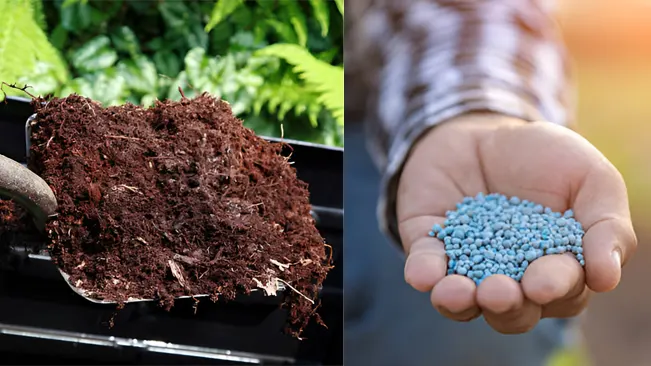
- Organic Fertilizers:
- Pros: Improves soil structure, releases nutrients slowly, reduces environmental impact.
- Cons: Nutrient availability can be slower and less predictable, and the results may take time to show.
- Inorganic Fertilizers:
- Pros: Provides quick, predictable nutrient availability; convenient and easy to apply.
- Cons: Can lead to soil degradation over time, may contribute to pollution if overused, and does not improve soil structure.
Common Mistakes to Avoid When Fertilizing Fruit Trees
Even with the best intentions, mistakes in fertilization can lead to poor results. Here are some common pitfalls to avoid:
- Over-fertilization: More is not always better. Too much fertilizer can burn the roots, cause excessive leaf growth, and reduce fruit production. Always follow the recommended application rates based on your tree’s size and age.
- Fertilizing at the Wrong Time: Fertilizing too late in the season encourages new growth, which can be damaged by frost. Stick to spring and early summer fertilization for the best results.
- Neglecting Soil Testing: Without knowing your soil’s existing nutrient levels, you could be adding unnecessary fertilizer, leading to imbalances.
- Using the Wrong Type of Fertilizer: Not all fruit trees have the same nutritional needs. Citrus trees, for example, require more nitrogen than stone fruit trees like peaches or cherries. Use fertilizers designed for your specific fruit tree variety.
The Importance of Mulching Alongside Fertilization
Mulching complements fertilization by helping to retain soil moisture, suppress weeds, and regulate soil temperature. A good mulch layer also slowly breaks down, adding organic matter to the soil. To mulch your fruit trees properly:
- Use Organic Mulch: Wood chips, straw, leaves, or compost make excellent mulch materials.
- Maintain a Layer of 2-4 Inches: Spread mulch in a circle around the tree, but keep it a few inches away from the trunk to prevent rot.
- Replenish Annually: Mulch breaks down over time, so replenish the layer each year, especially after fertilization.
Conclusion: Healthy Trees, Healthy Harvests
Fertilizing fruit trees is an essential part of maintaining their health and ensuring a productive harvest. By understanding your tree’s nutritional needs, using the right type of fertilizer, and applying it at the proper time, you can significantly boost your fruit yield and overall tree vitality. Remember to test your soil, avoid common mistakes, and consider mulching to enhance the effects of fertilization. A well-nourished fruit tree is not only a beautiful addition to your landscape but also a reliable source of fresh, delicious fruit for years to come.
Frequently Asked Questions (FAQ)
- When is the best time to fertilize fruit trees?
The best time to fertilize is in early spring, just before bud break, and again after fruit set in late spring or early summer. Avoid fertilizing in late summer or fall to prevent new growth that can be damaged by frost. - How do I know if my fruit tree needs fertilizer?
Signs include slow growth, yellowing leaves, poor fruit production, or a history of small, unproductive fruit. A soil test is the best way to accurately determine nutrient deficiencies. - What type of fertilizer should I use for fruit trees?
Use balanced fertilizers like 10-10-10 for general needs, or opt for organic options such as compost or manure. Some trees, like citrus, may benefit from specialized fertilizers with extra nitrogen or micronutrients. - Can I use compost instead of commercial fertilizer for my fruit trees?
Yes, compost is a great organic fertilizer that improves soil structure and provides nutrients. However, it may need to be supplemented with additional nitrogen, depending on your soil’s condition. - Is over-fertilizing fruit trees harmful?
Yes, too much fertilizer can lead to excessive leaf growth at the expense of fruit production and can burn the tree’s roots. It may also make the tree more susceptible to pests and diseases. - How much fertilizer should I apply to my fruit tree?
The amount depends on the tree’s size, age, and soil condition. Generally, 1 to 2 pounds of nitrogen per inch of trunk diameter is a good rule for established trees, but always follow the specific fertilizer package instructions or consult a local expert. - Should I fertilize newly planted fruit trees?
It’s usually best to avoid fertilizing newly planted fruit trees during their first year. Focus on proper watering and mulching. If needed, use a very light, balanced fertilizer in the second year. - Can I fertilize fruit trees with manure?
Yes, well-rotted manure is an excellent organic fertilizer. Apply it in early spring to improve soil fertility, but avoid fresh manure as it can burn the tree’s roots and introduce pathogens. - How often should I fertilize my fruit trees?
Fertilizing once or twice a year is usually sufficient. Fertilize in early spring and, if needed, again in early summer after fruit set. - What are the signs of nitrogen deficiency in fruit trees?
Symptoms include yellowing leaves (especially older ones), slow or stunted growth, and reduced fruit yield. If the tree shows these signs, a nitrogen-rich fertilizer may be needed.

Benjamin Brooks
Forestry AuthorGreetings! I'm Benjamin Brooks, and my journey over the past 15 years has revolved around the fascinating realms of content creation, expertise in snow clearing, and the intricate world of lumberjacking and landscaping. What began as a simple curiosity about the natural world and heavy machinery has evolved into a passionate profession where my love for crafting words intertwines seamlessly with my lumberjacking and garden skills.


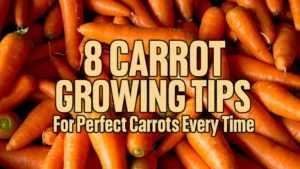

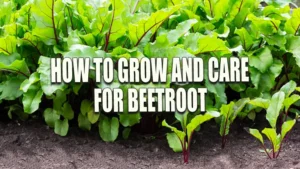








Leave your comment